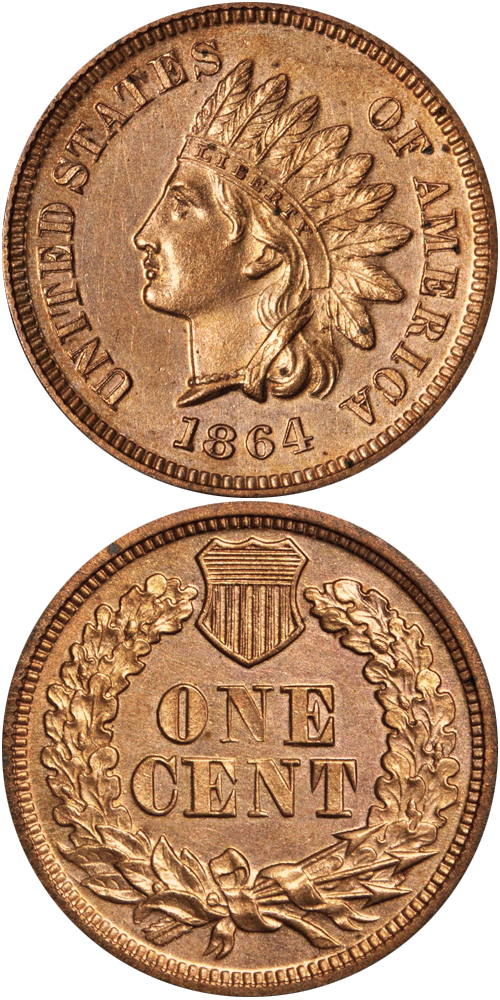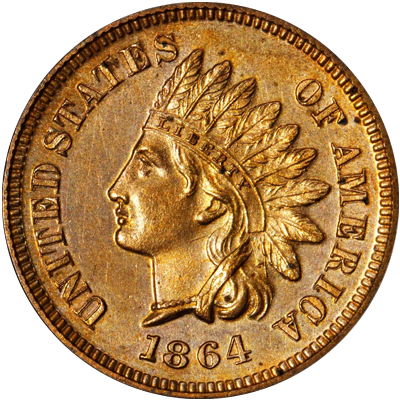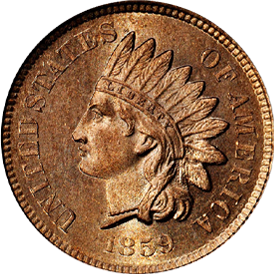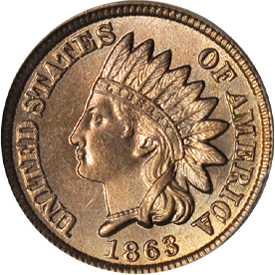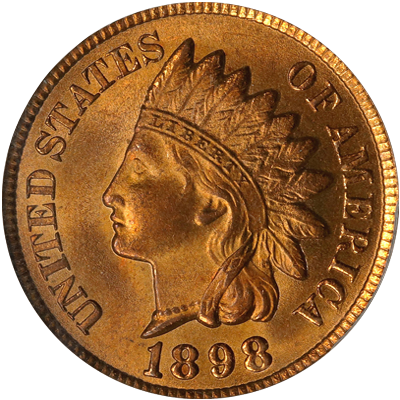The first small cent design featuring a Flying Eagle was struck for circulation only two years (1857 and 1858). Due to striking difficulties, it was succeeded by a new design by James Longacre featuring an Indian Princess in 1859. The first year, no shield appeared above the laurel wreath on the reverse, but in 1860, a shield was added and the wreath modified to be one of oak leaves.
Until the middle of 1864, a copper-nickel composition consisting of 75% copper and 25% nickel was used, but in 1864, the composition was changed to bronze (95% copper, 5% tin and zinc). Also in that year, a small “L” was added to the ribbon below the Indian Princess’s ear. While the cents were thinner and lighter, they were readily accepted by the public, and the design continued almost unchanged until 1909. The only modification occurred in 1886, when the bottom feather in the headdress was lowered slightly and now pointed between the “CA” IN AMERICA rather than the “IC” seen earlier.
Indian cents were struck in Philadelphia exclusively until 1908, at which time coinage began at the San Francisco mint as well, and in 1908 and 1909, some Indian cents appeared with an “S” mintmark below the wreath. These coins, along with the 1871, 1872, 1877 and several overdates and doubled dies are the keys to the series.
